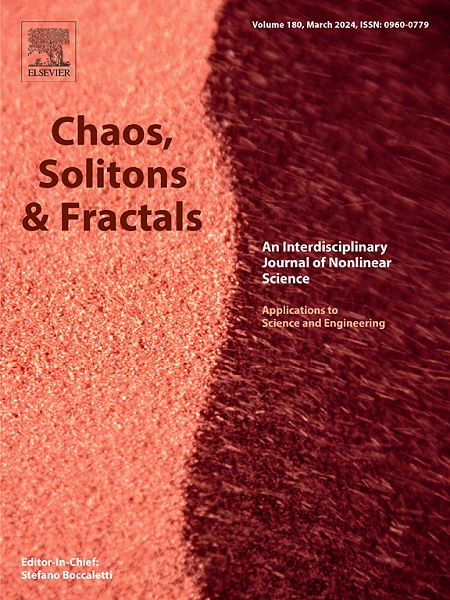MEMS陀螺小型耦合网络的动力学分析与加速自适应规定性能控制
IF 5.6
1区 数学
Q1 MATHEMATICS, INTERDISCIPLINARY APPLICATIONS
引用次数: 0
摘要
本文深入研究了微型机电系统(MEMS)陀螺仪小型耦合网络的动态分析、电子电路设计和加速自适应规定性能控制。最初,为了弥补单/双质量陀螺仪的低灵敏度和低带宽问题,我们提出了一种相互耦合的微机电系统陀螺仪小型耦合网络结构,并进一步通过牛顿定律和振动动力学理论建立了其数学模型。随后的动力学分析利用 Lyapunov 指数等工具揭示了这种耦合网络的丰富动态特性。随后,为了从硬件层面理解该耦合网络的动态特性,并促进电子元件的后续模具生产,我们根据能量流理论设计了一个等效模拟电路,其模拟结果与上述动态分析结果非常吻合。为了减轻有害振荡并解决状态约束,我们提出了一种加速自适应规定性能控制方案。在该方案中,加入了速度函数以加快误差收敛速度,并设计了双曲正切跟踪微分器(HTTD)来近似虚拟控制输入的导数,以降低计算复杂度,有效避免 "复杂度爆炸"。此外,还使用 2 型模糊小波神经网络(T2FWNN)对系统的非线性未知函数进行近似,并通过规定的性能函数将跟踪误差限制在给定边界内。最后,大量的模拟和比较结果有力地证明了我们方案的可行性和有效性。本文章由计算机程序翻译,如有差异,请以英文原文为准。
Dynamical analysis and accelerated adaptive prescribed performance control of a small coupling network of MEMS gyros
This paper delves into dynamic analysis, electronic circuit design, and accelerated adaptive prescribed performance control of a small coupling network of micro-electro-mechanical-system (MEMS) gyros. Initially, to compensate for the low sensitivity and bandwidth in single-/dual-mass gyro, we propose a small coupling network structure of MEMS gyros with mutual coupling, and further build its mathematical model via the Newton's laws and vibration dynamics theory. The subsequent dynamical analysis reveals abundant dynamic characteristics of such a coupling network using tools like Lyapunov exponents. Subsequently, to understand the dynamics of this coupling network at the hardware level and facilitate the subsequent die production of electronic components, we design an equivalent analog circuit based on energy flow theory, and its simulated results closely match those of the dynamical analysis above. To mitigate the harmful oscillations and address the state constraints, we propose an accelerated adaptive prescribed performance control scheme. In this scheme, a speed function is incorporated to accelerate error convergence rate, and a hyperbolic tangent tracking differentiator (HTTD) is designed to approximate the derivatives of the virtual control inputs to reduce computational complexity and effectively avoiding “complexity explosion”. Additionally, nonlinear unknown function of the system is approximated using a type-2 fuzzy wavelet neural network (T2FWNN), and tracking errors are constrained within a given boundary by prescribed performance functions. Finally, extensive simulations and comparison results provide compelling evidence of the feasibility and efficacy of our scheme.
求助全文
通过发布文献求助,成功后即可免费获取论文全文。
去求助
来源期刊

Chaos Solitons & Fractals
物理-数学跨学科应用
CiteScore
13.20
自引率
10.30%
发文量
1087
审稿时长
9 months
期刊介绍:
Chaos, Solitons & Fractals strives to establish itself as a premier journal in the interdisciplinary realm of Nonlinear Science, Non-equilibrium, and Complex Phenomena. It welcomes submissions covering a broad spectrum of topics within this field, including dynamics, non-equilibrium processes in physics, chemistry, and geophysics, complex matter and networks, mathematical models, computational biology, applications to quantum and mesoscopic phenomena, fluctuations and random processes, self-organization, and social phenomena.
 求助内容:
求助内容: 应助结果提醒方式:
应助结果提醒方式:


